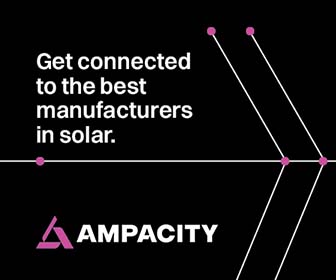2015 is the Perfect Storm for Going Solar
Five reasons it’s never been a better time to adopt solar
Last year, the U.S. commercial sector installed just over 1 gigawatt of solar capacity. This added solar wasn’t just installed by California businesses and public entities. In fact, Massachusetts, New York, North Carolina, and Maryland joined California as being the states with the largest increase in solar adoption by the commercial sector.
Since 2010, U.S. businesses have installed more than 32,000 solar energy systems. Why? It’s good business. For most businesses and public entities, the burden of energy cost fluctuations can be alleviated with a solar energy system.
Solar makes more economic sense than ever before—especially for those with big energy appetites. There are five key factors making 2015 the best time ever to invest in solar: the decline of the 30% ITC, expiring state programs, the price of solar, the cost of energy, and financing.
The Step Down of the Federal Incentive
The federal solar Investment Tax Credit (ITC), which has been in effect since 2006, provides solar energy system owners a 30% tax credit for the first five years a solar energy system is in operation. Improving the economics of solar for companies with big tax liabilities and for institutional investors looking for tax credits, the incentive is guaranteed and available to any solar installation in the U.S., regardless of location and size. Unfortunately, the ITC will step down from 30% to 10% at the end of 2016.
So what’s the urgency? The drop in the ITC to 10% will have a significant impact on the economics of solar, and it’s something the solar industry, Wall Street, and rate payers are preparing for. In order for a project to qualify for the full 30% ITC, businesses need to make the decision to go solar now. Ideally, a system would start construction during the spring of 2016 to make the cut off. However, the rush to get installations complete and online by January 1, 2017 will impact the availability of quality solar integration resources, and projects that try to enter the queue too late in the game, might get pushed to 2017 and miss out on the more lucrative ITC.
State Solar Friendly Programs and Incentives are Temporary
Almost every state has programs in place to help their residents invest in solar. These policies help improve the economics of going solar, make it more accessible within certain markets, or do both at the same time. California, Massachusetts, New York, and New Jersey are examples of states that have made solar development a core objective and have the policy programs and incentives in place to prove it. That being said, most state programs, whatever their scope, are temporary, because they were designed to jumpstart the market and in some cases, use limited public funds to incentivize early adoption of solar technology.
Entities considering solar should look at their own state policies to see if and when they are set to expire or reach their limit, because without them, returns might be slightly less lucrative.
The Declining Price of Solar
The price of solar energy has fallen dramatically over the past few years. The average price of a completed commercial PV project in Q2 2014 dropped by more than 45% since 2012—while the price of electricity rates continues to rise and experience volatility. However, the price of solar isn’t going to continue to fall like it has over the past few years.
The industry has made big strides in technology cost reduction and is now focused on lowering the balance of system costs, which make up around half of the cost of an installed system. However, the costs of raw materials are starting to rise as the demand for solar increases. Additionally, some foreign solar panels are now subject to trade tariffs, which significantly increases one of the major component costs of a solar energy system.
The chart (Fig. 1) shows the inverse relationship between the increase in solar capacity installed, and the decrease in average commercial system price over the past few years. As the solar industry has matured so has the operations and processes of its players, but the average system price is starting to level out.
Retail Rates for Electricity
The increasing costs and inherent volatility of electricity prices are an ongoing concern for businesses and the public sector, and one that solar can help reduce, if not eliminate altogether. Average electricity rates for the commercial sector have increased more than 20% in the past ten years (see Fig. 2), moving from $0.08/kWh to more than $0.10/kWh. This is an average across the U.S., so in some markets where the cost of electricity is noticeably higher, the swing has been even more egregious. Given that the commercial sector consumes more than 1.3 trillion kilowatt-hours each year, this price increase has resulted in tens of billions of dollars in additional utility bills, according to GTM Research and SEIA’s Solar Means Business Report.
By investing in solar, entities can secure a set price for their energy with zero fuel costs using on-site generation. When designed correctly, solar can also oftentimes lower demand charges too – a common fee for commercial consumers. In the case of a third party financing the system, the cost of electricity to the customer is going to be at, or more often below, grid rates.
Available Financing
Approximately 68% of installations in 2014 utilized a Power Purchase Agreement (PPA), which eliminates the upfront costs of going solar for the buyer. PPAs allow entities to buy energy from the owner of the installation for a price that is lower than (in some cases equal to) utility retail rates. The third-party owner finances the installation and recoups their investment through the sale of the clean power to the host customer.
Investors have been attracted by the economics of owning a solar energy system, and in turn securing solar off-takers to buy the energy in the form of PPA financing, in large part because of the federal solar ITC. Typical PPA owners are banks and institutional investors who have a tax appetite and a need for the tax credits that come with the Federal ITC. With the impending stepdown of the ITC at the end of 2016, investor confidence in markets that are still maturing is expected to falter, and more and more pools of capital that have been previously set aside for solar projects will dry up.
Take Away
For those who use a lot of electricity, now is the time to look into solar. Along the way, it may be learned the available facilities aren’t suited for the technology, or that the state of residency isn’t currently primed for solar, but at least due diligence will have been performed. Many will find solar is a relatively simple arrangement, and with the various technologies and financing solutions available in the market, it’s quite versatile and there’s probably a package that will work. But in order to increase the chance of solar meeting an aggressive IRR or ROI hurdle, and give it the best-shot possible, the process must be started now to get in the queue before it’s too late.
Kyle Kearney is the VP of project development, Western region, for Borrego Solar
Borrego Solar | www.borregosolar.com
Volume: July/August 2015











.png?r=7931)
